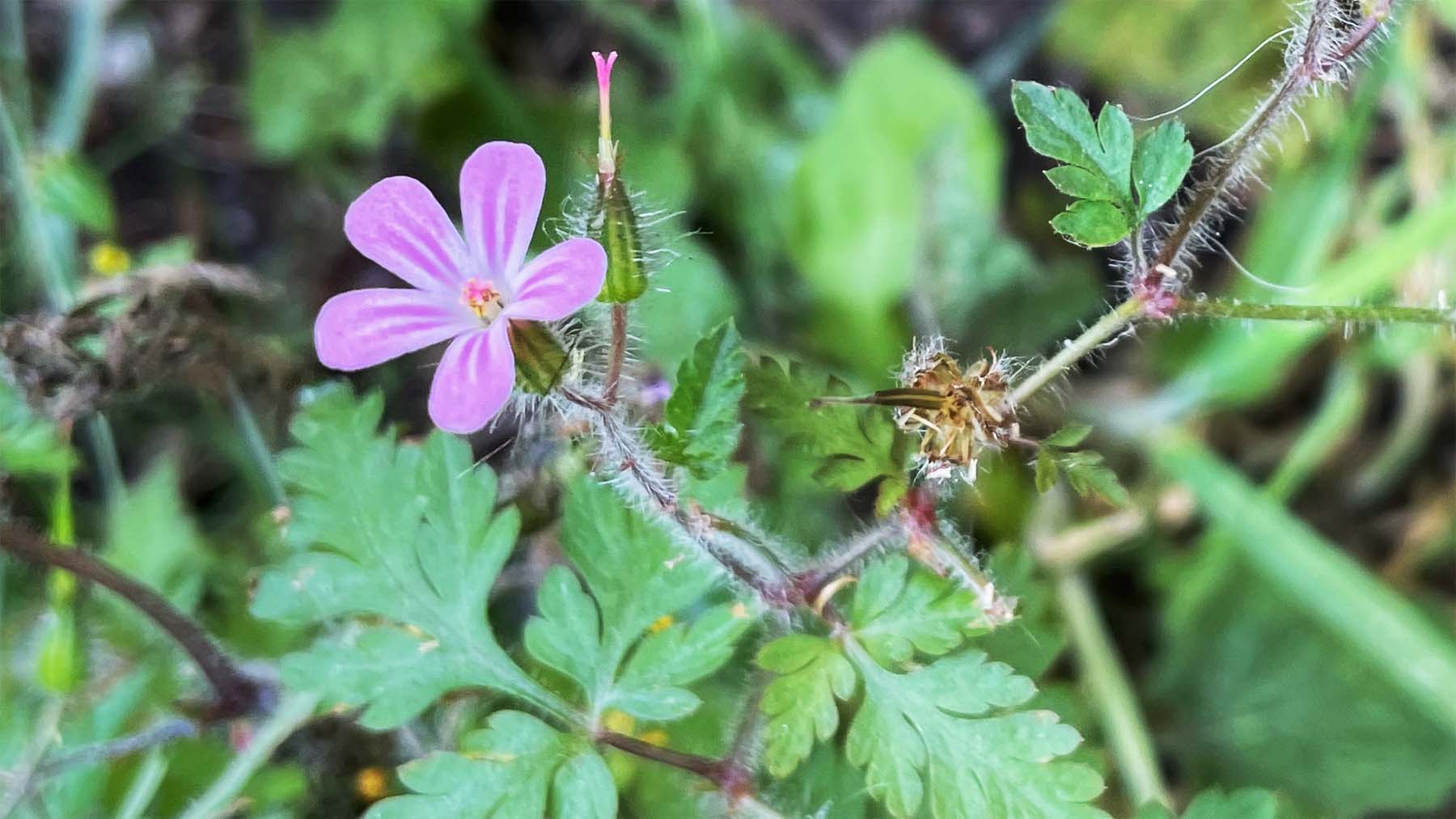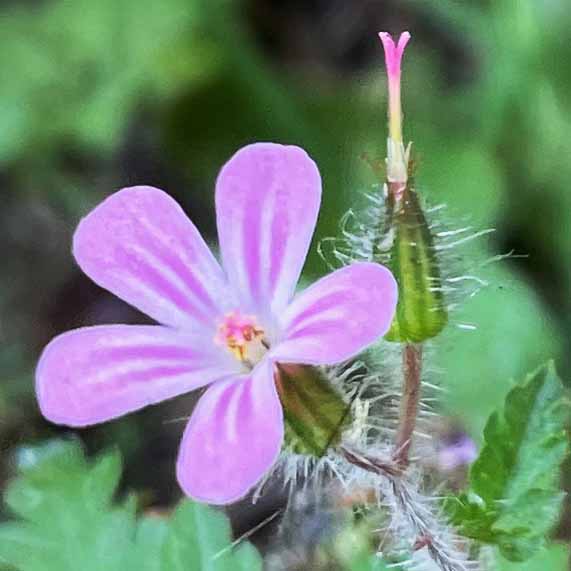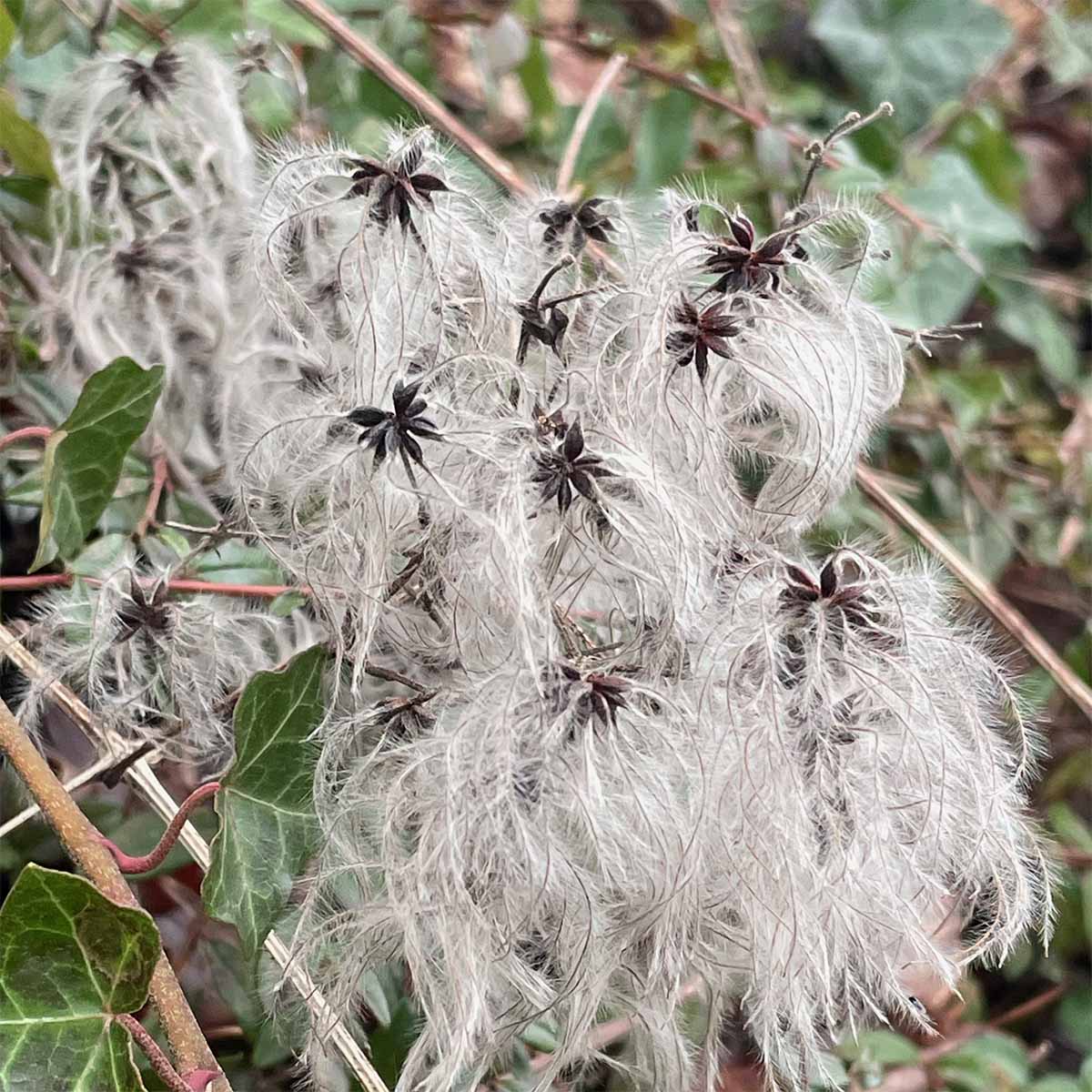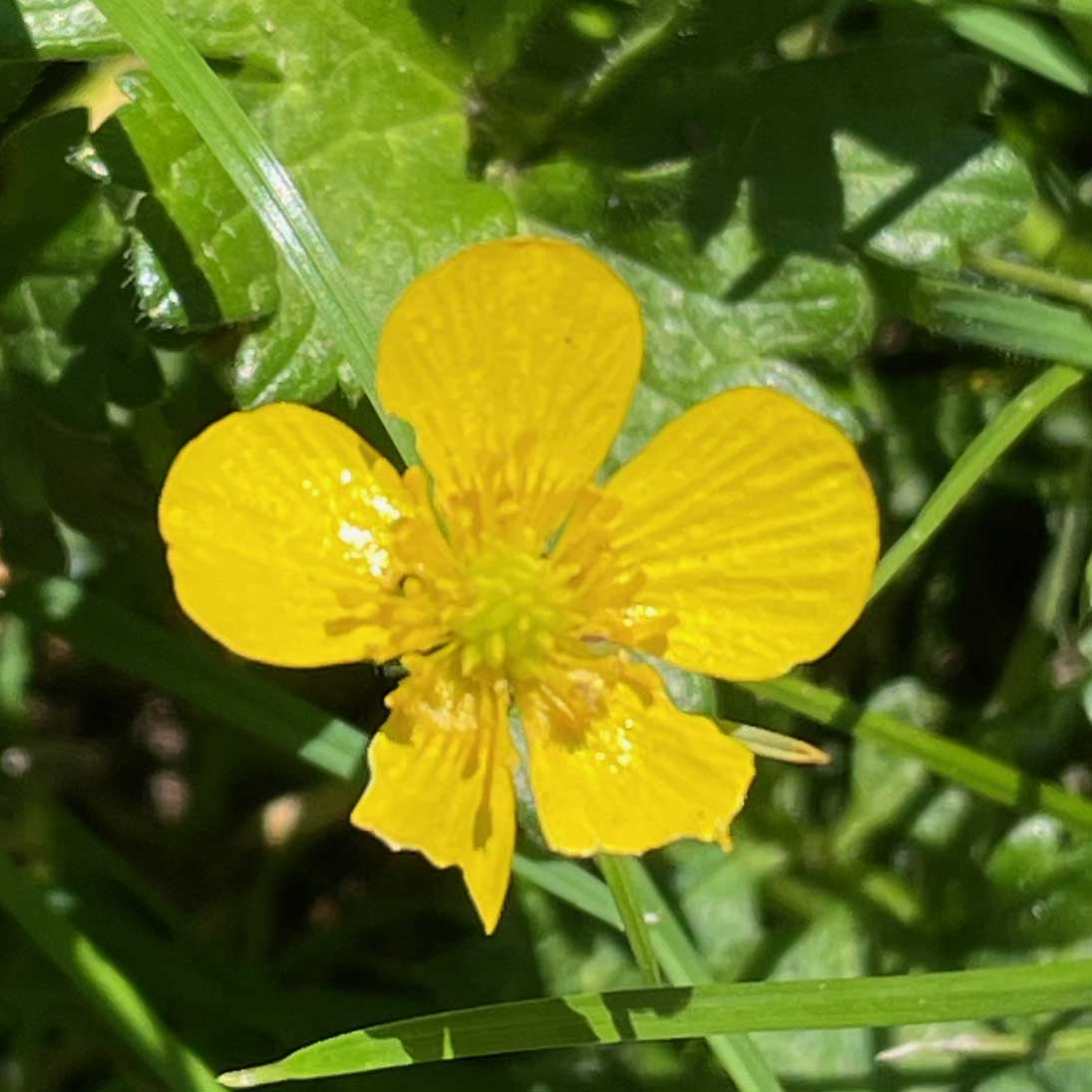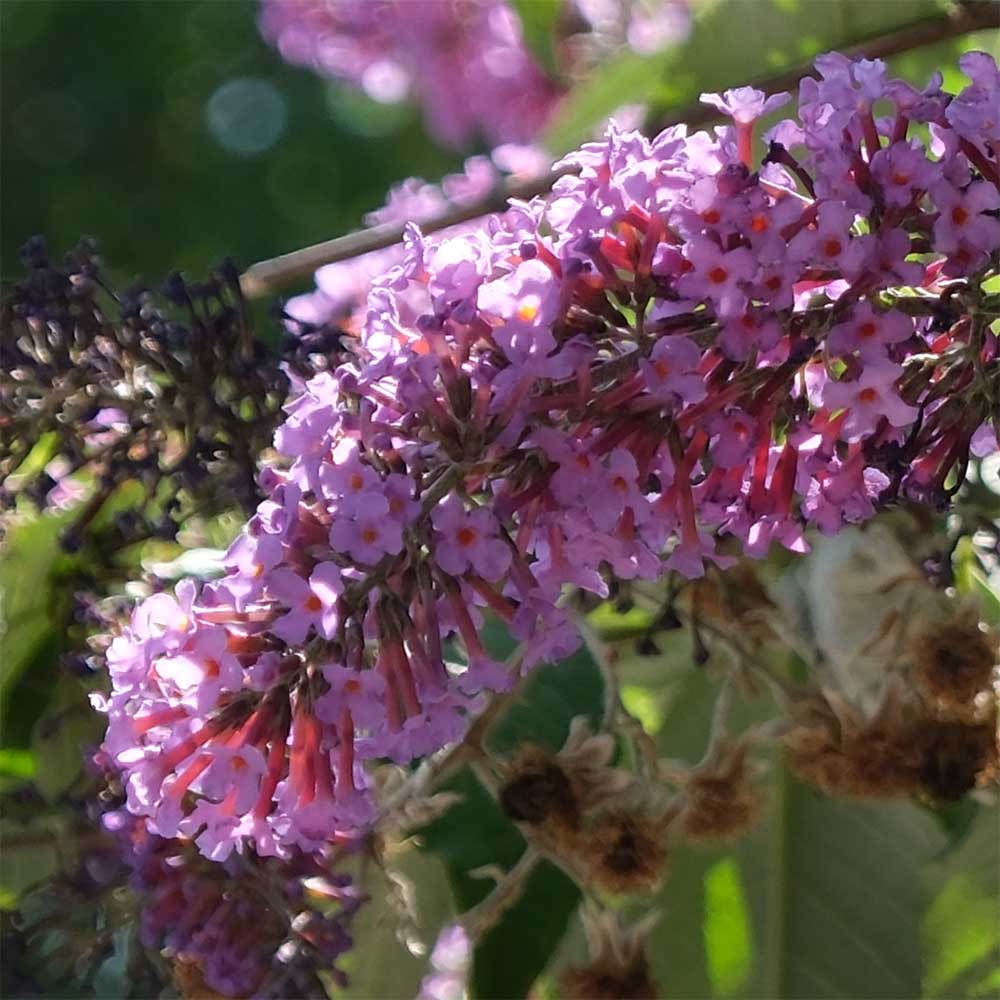Herb Robert, "Stinky Bob" (Geranium robertianum)
How to identify Herb Robert
Herb Robert is small, low growing plant. The leaves smell bad when they are crushed.
Seedpods

Seedpods are long and pointed with a round, hairy base.
Leaves and Stems
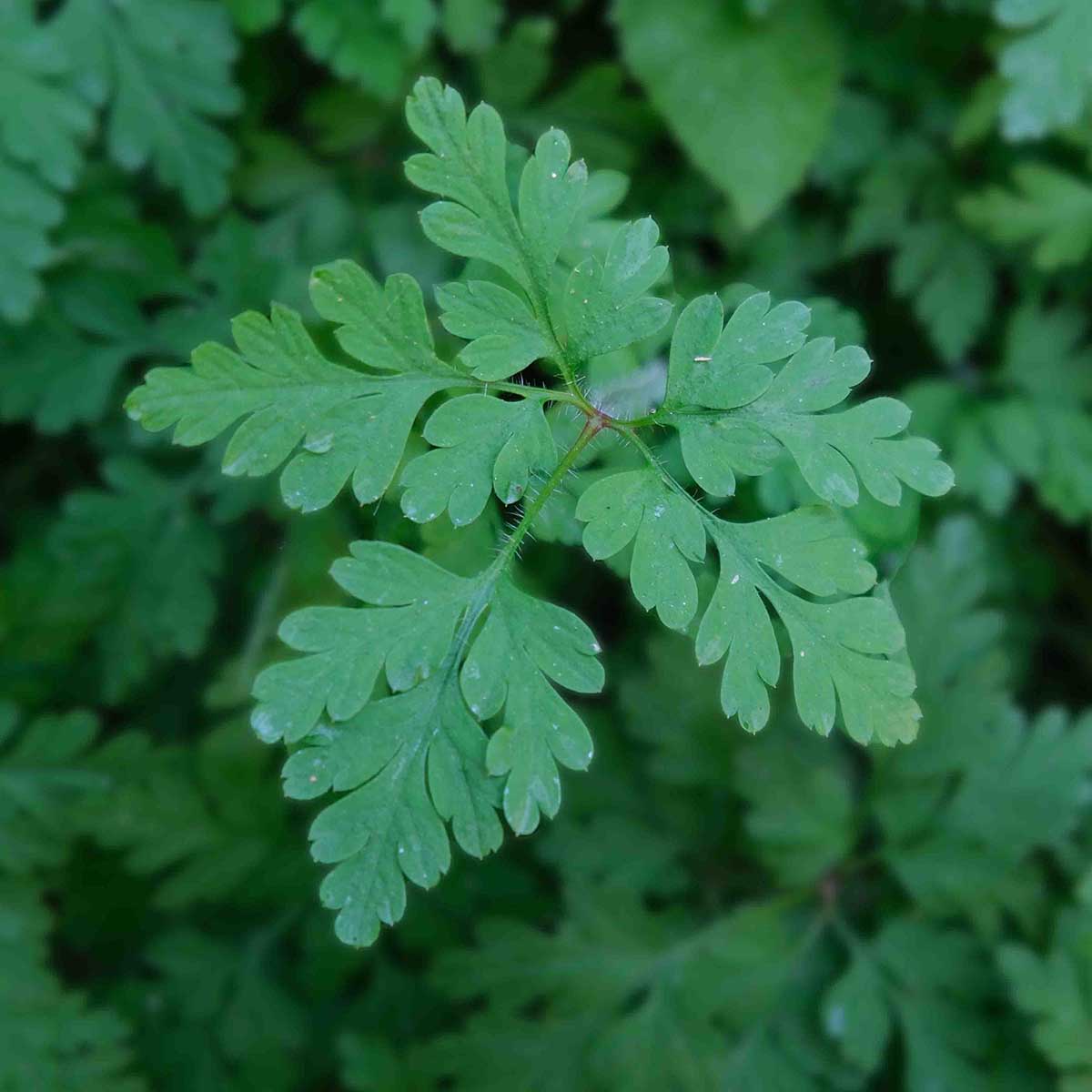
Leaves are fern-like with hairy stems. Stems can be reddish or purple in sunny locations.
Flowers
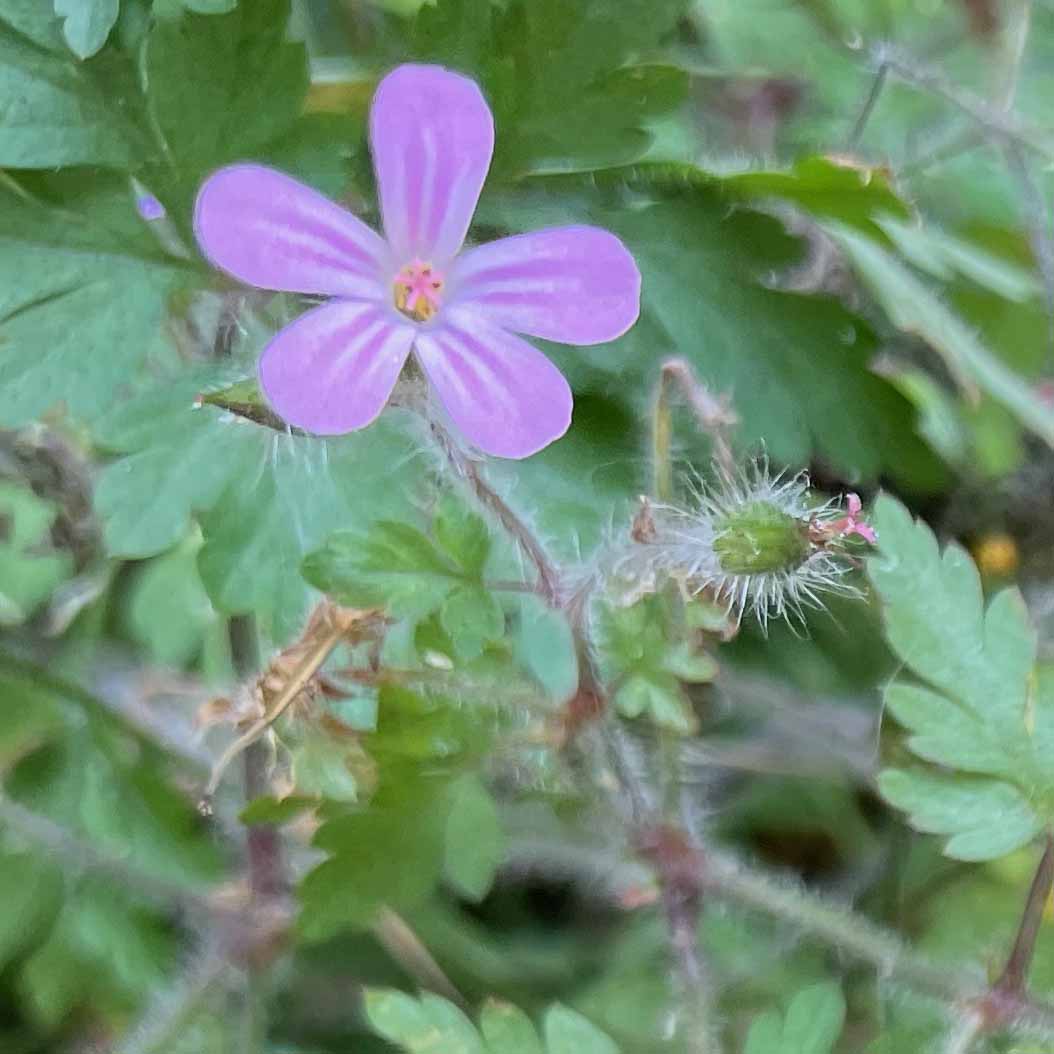
Small pink flowers with 5 petals.
Why remove it?
- Herb Robert can grow in undisturbed forest and quickly overtake native understory plants.
- It spreads easily. The seeds can be ejected up to 20 feet and stick to people and pets via sticky threads.
How to remove it
Pull in the spring before it creates seedpods. Pulling is very easy and effective due to its weak roots.
How to dispose of it effectively
Bag any plants that have seedpods and dispose in trash. If plants do not have seedpods, it is ok to put them in Seattle's yard waste.
Old Man's Beard (Clematis Vitalba)
How to identify Old Man's Beard
Old Man's Beard is an extremely fast growing deciduous vine.
Seedpods
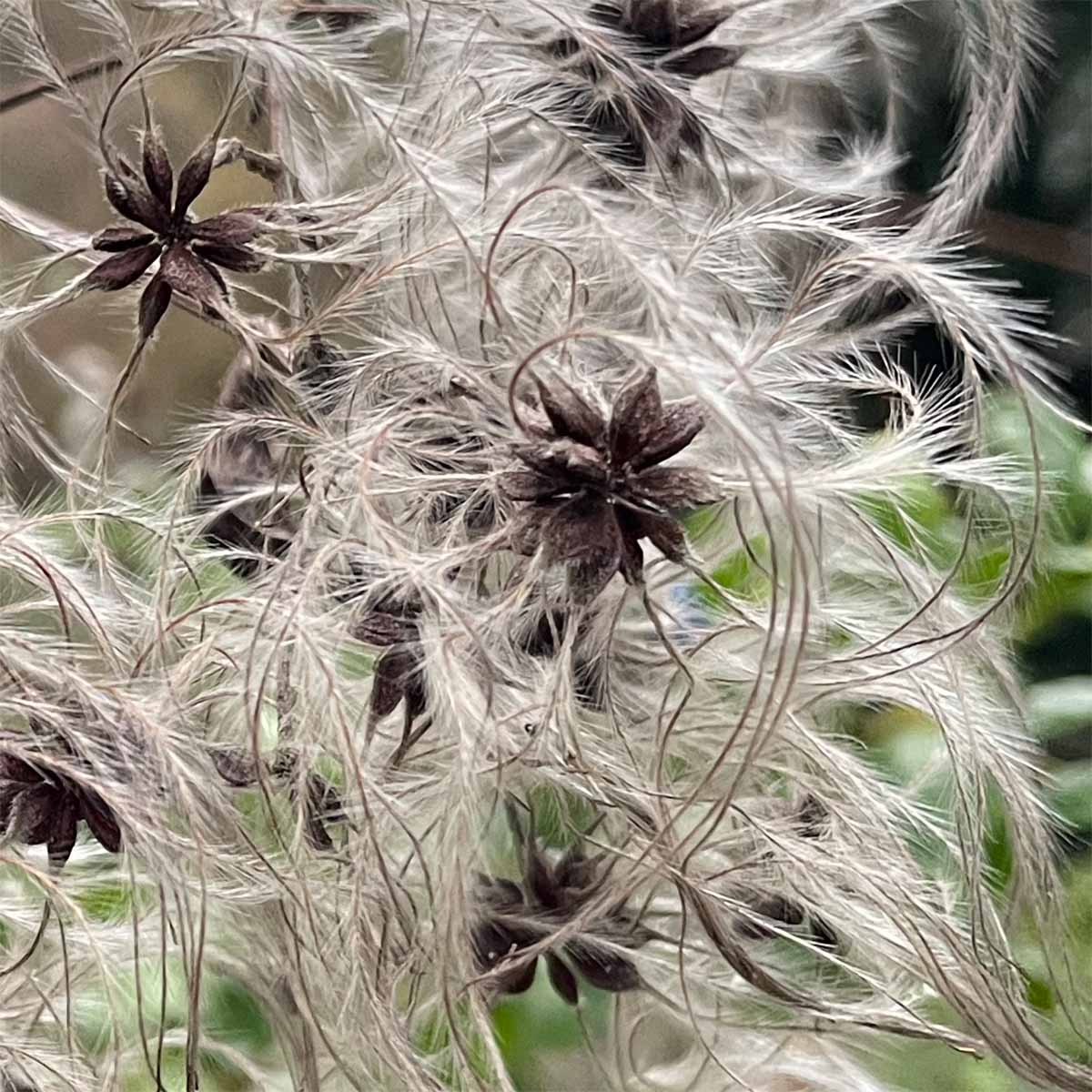
Seeds have long fluffy white feathers and grow in bunches.
Leaves and Stems
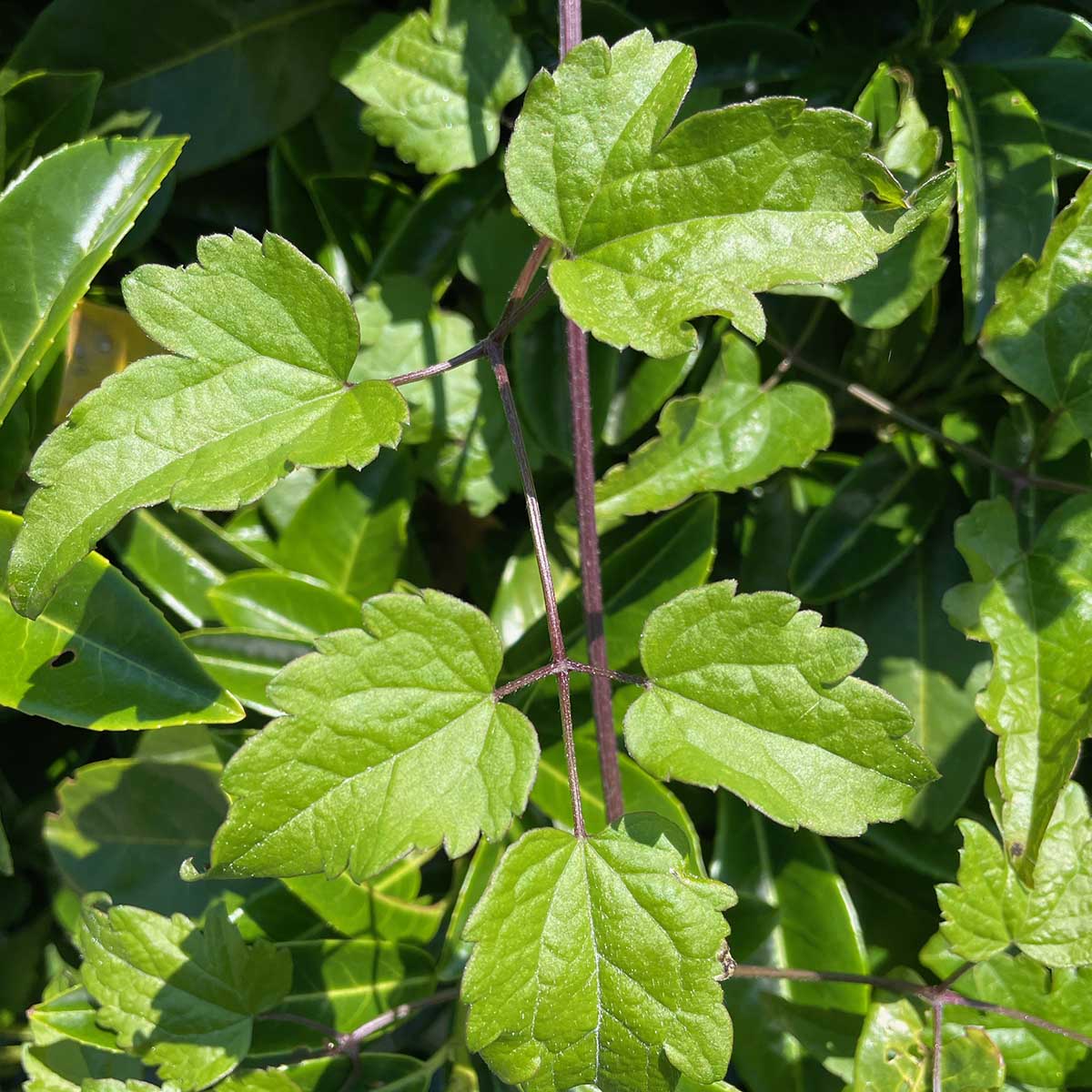
Leaves are 5 oval leaflets on a thin stem and can have smooth or serrated edges. Stems are ridged and can be purple in sunny locations.
Flowers

Small white flowers with 4 sepals.
Why remove it?
- Old Man's Beard can completely cover a tree and weaken it until it dies.
- One plant can produce 100,000 seeds a year and seeds can live up to 5 years.
How to remove it
Use gloves and wear long sleeves and pants when removing Old Man's Beard, it can be irritating.
Cut large vines at about waist height, then find where the vines emerge from the ground and dig out the roots. Old Man's Beard is easiest to remove in the winter when it's dormant.
How to dispose of it effectively
Dispose of flowering stems and root balls in the trash.
Creeping Buttercup (Ranunculus repens)
How to identify Creeping Buttercup
Creeping Buttercup is small, low growing plant which spreads via fast-growing runners.
Seedpods
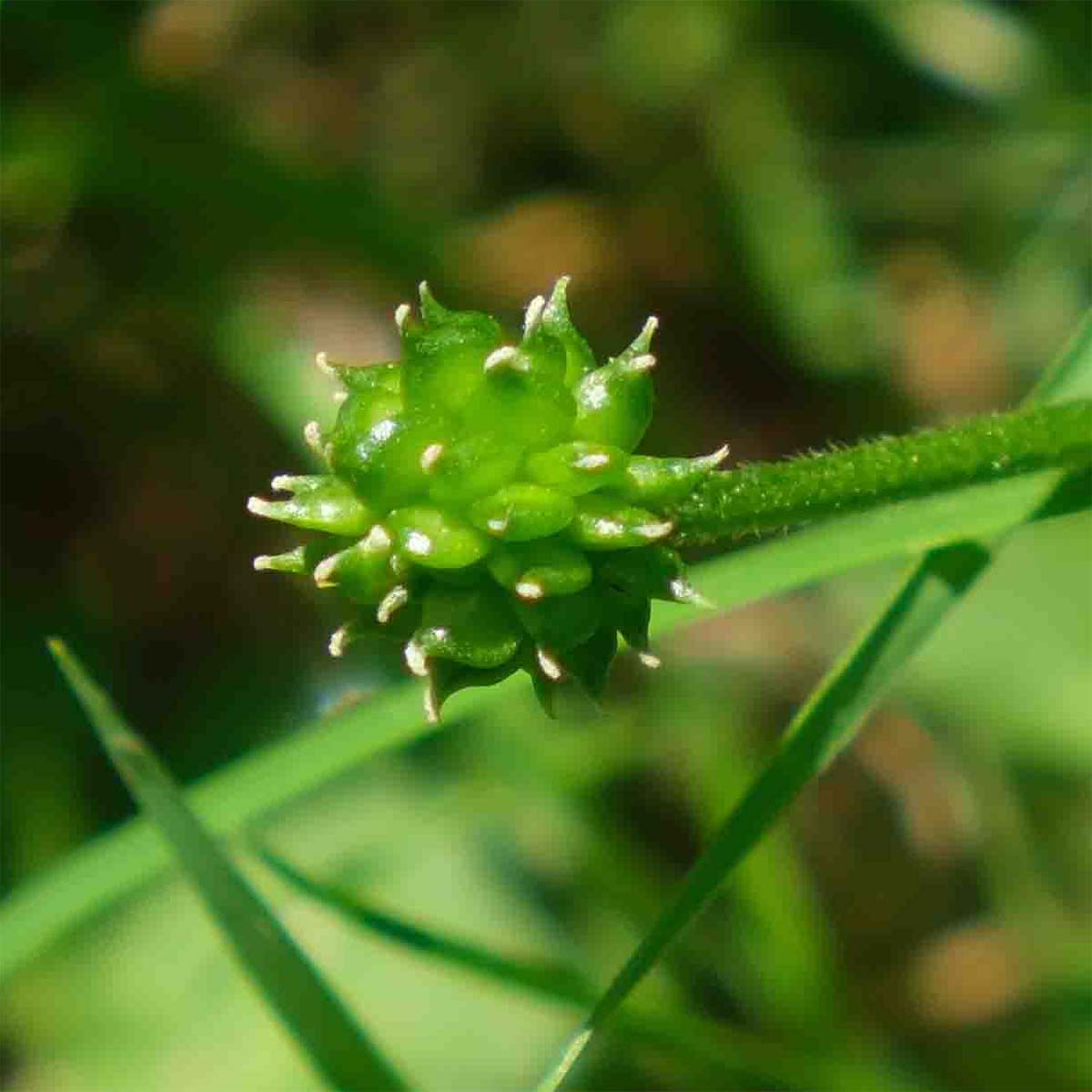
Seedpods are orb-shaped clusters of spikes.
Leaves

Leaves have 3 sections with toothed edges. Color is dark green with pale spots at the divisions.
Flowers
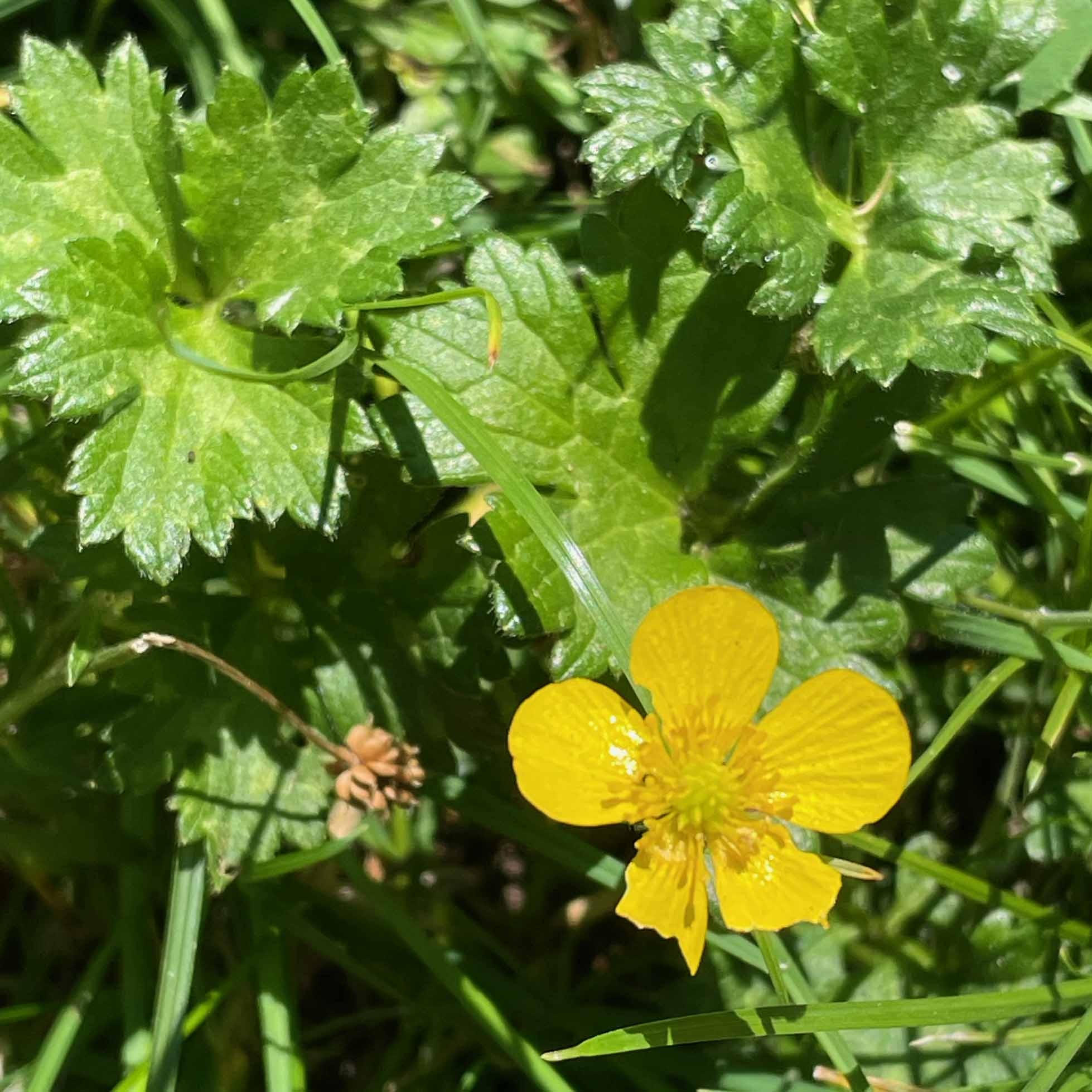
Small yellow flowers with 5 to 10 petals. Petals are very shiny.
Why remove it?
- One plant can cover up to 40 feet of ground. It can quickly take over lawns and gardens.
How to remove it
Use gloves when removing buttercup, it can be irritating. Buttercup is easiest to control where it is not yet established. Dig out small plants before they grow runners. Dig up plants and as much of the roots as possible. Plants are easiest to remove when the ground is moist.
How to dispose of it effectively
Put plants with seedpods in the trash. If plants do not have seedpods, it is ok to put them in Seattle's yard waste.
Butterfly Bush (Buddleia davidii)
How to identify Butterfly Bush
Butterfly bush is a large shrub with curved stems up to 15 feet long.
Flowers

Large, cone-shaped clusters of small pink or purple flowers with orange centers.
Leaves
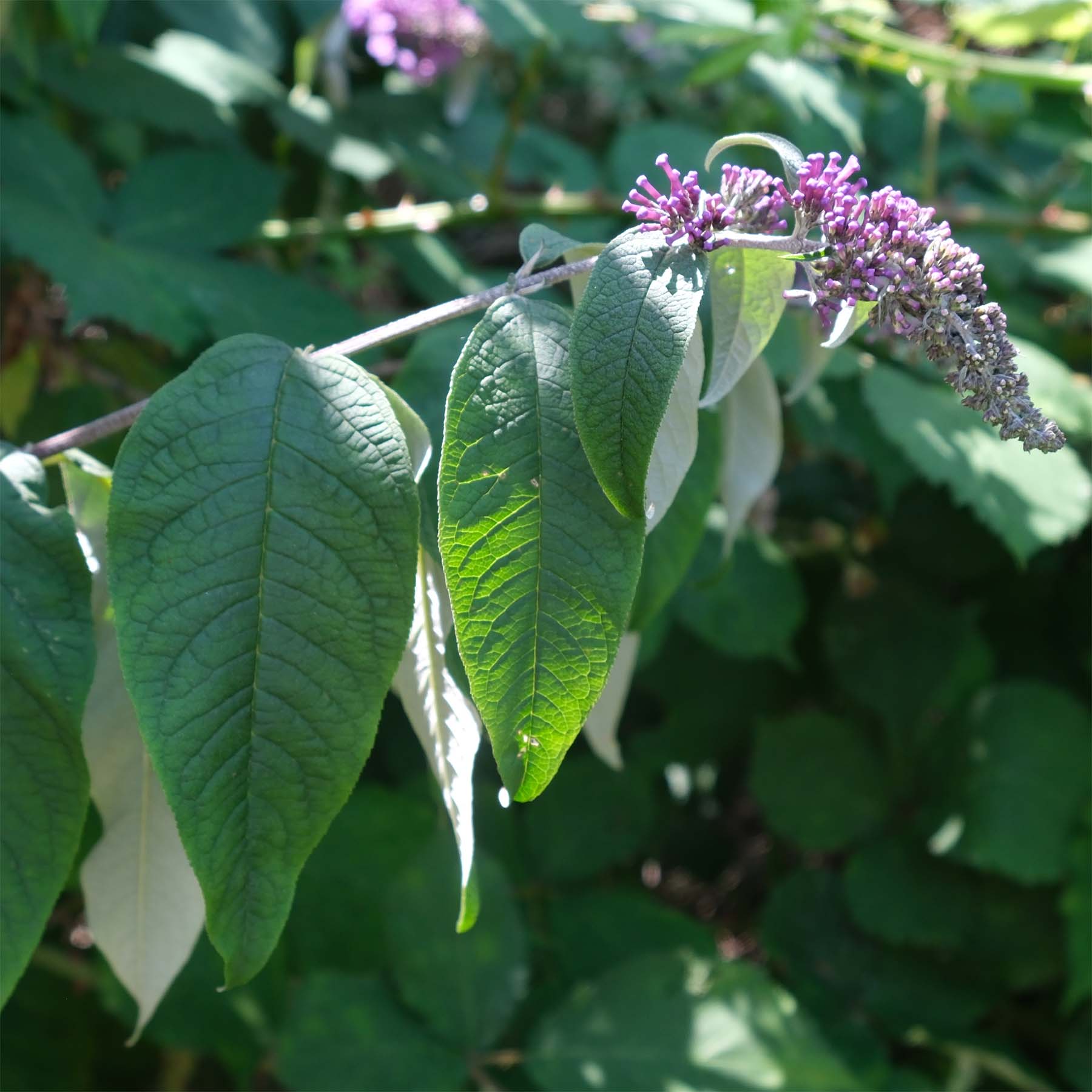
Leaves are lance shaped up to 10 inches long and dark green with a silvery underside.
Seeds
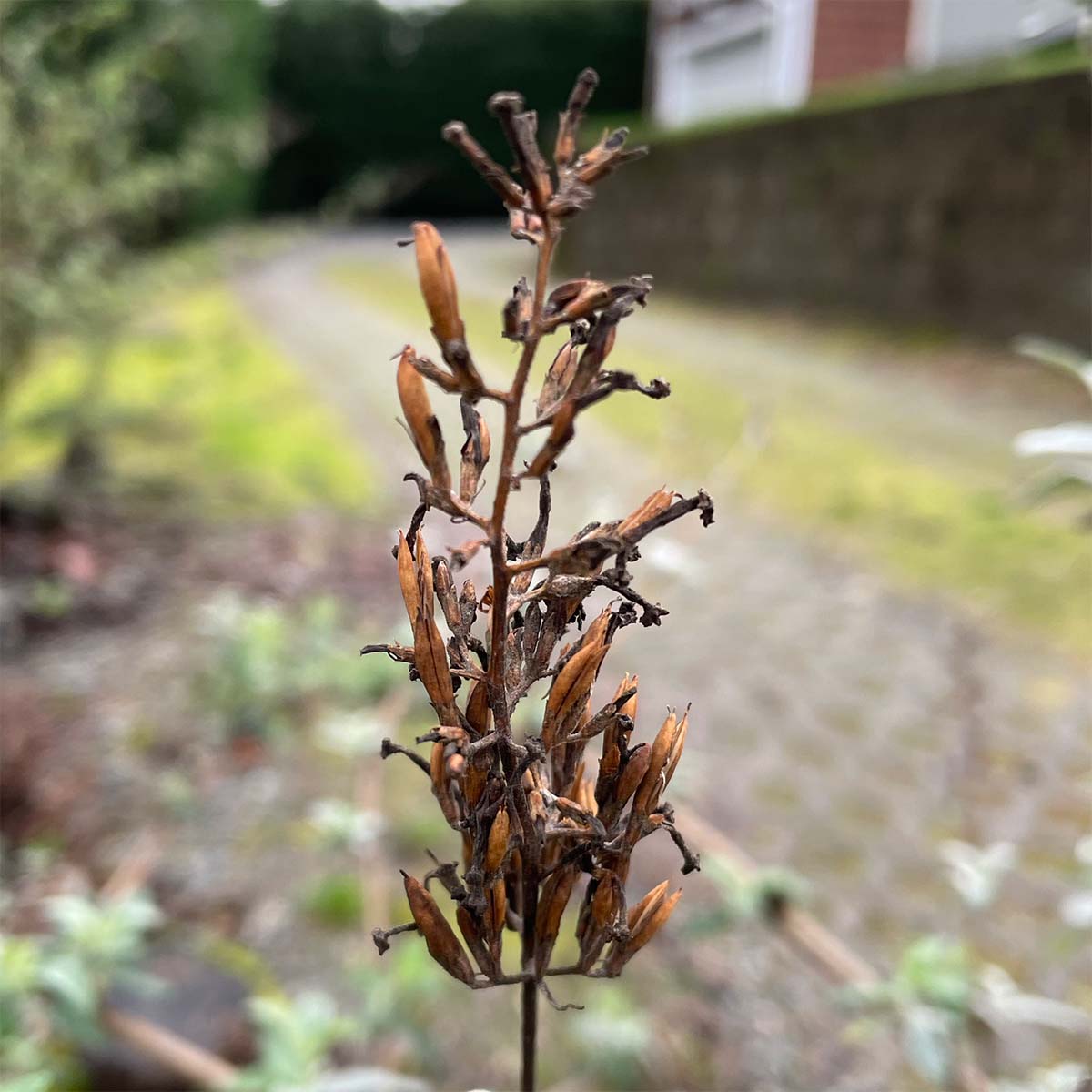
Seeds are cone shaped clusters of long pointed brown pods.
Why remove it?
- Butterflybush is adapted to grow on streambanks and easily takes over vital habitat.
How to remove it
Remove flowers before they seed. Dig up small plants before they get too large. Mow or cut down large plants, then remove as much of the roots as possible.
How to dispose of it effectively
Dispose of stems and flowering branches in the trash. Cut stems will regrow if left on the ground.
English Ivy (Hedera Helixt)
How to identify English Ivy
English Ivy is a densely growing evergreen vine.
Leaves
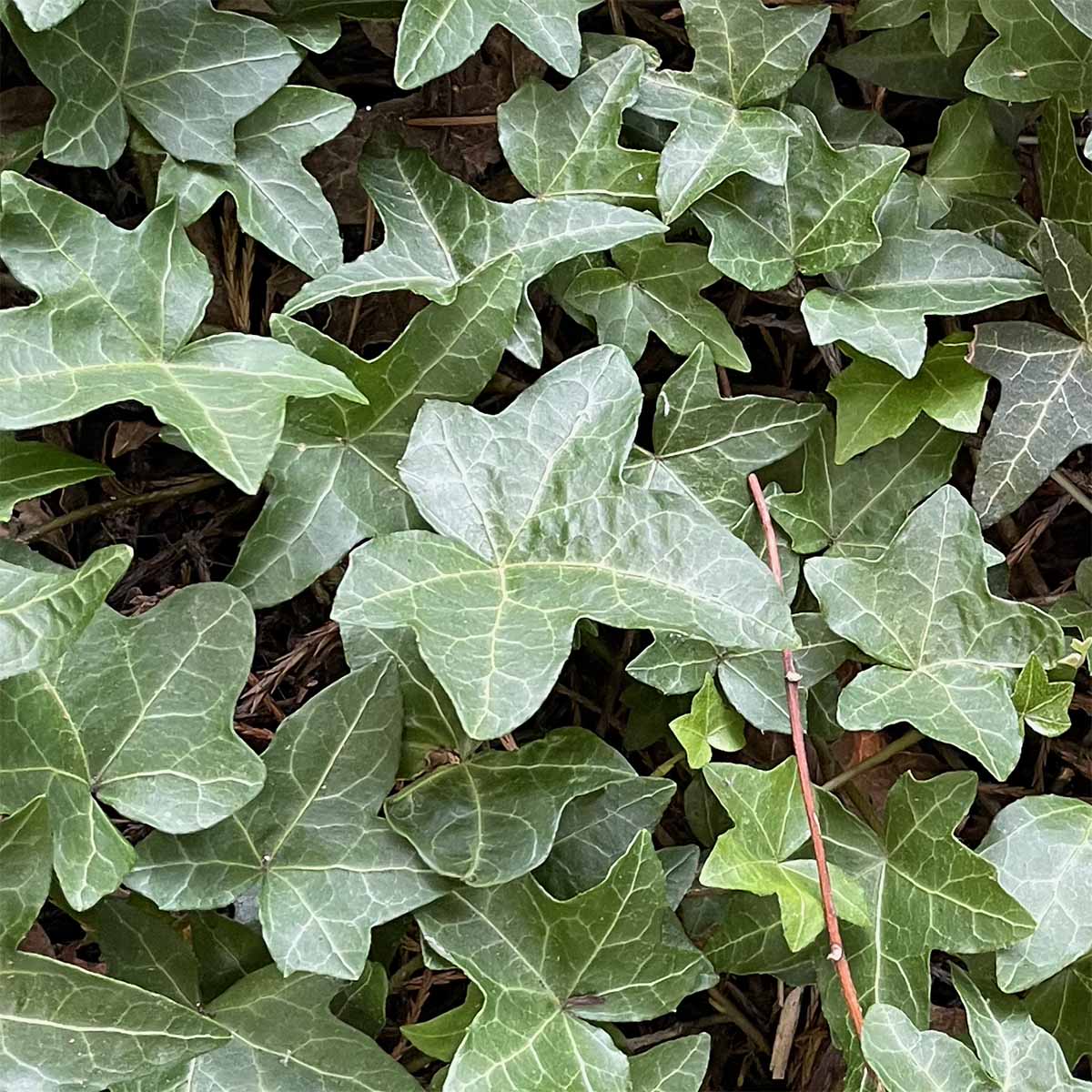
Leaves have 3 to 5 points and are dark green with pale veins.
Mature Leaves

Mature leaves appear when ivy is about 10 years old. They are round or angular with 1 point.
Fruit
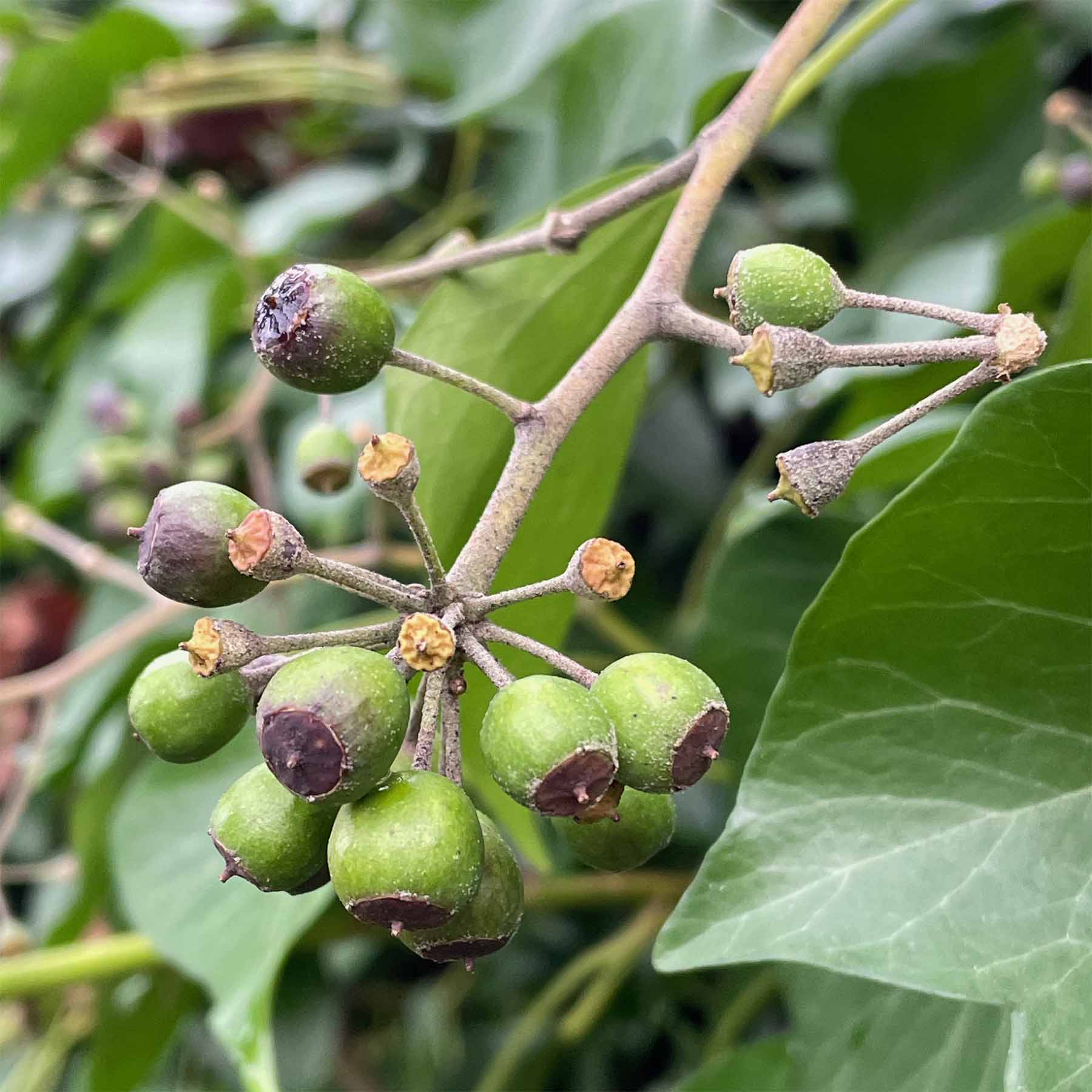
Mature vines produce clusters of white flowers and round berries.
Why remove it?
- Trees covered in ivy are much heavier and can be more susceptible to falling over, especially in winter storms.
- Ivy can completely cover shrubs and small trees.
How to remove it
If ivy is covering a tree, remove stems from the base of the tree to 3 to 4 feet from the ground. Ivy above the cut will eventually die and fall off.
If ivy is covering the ground, pull up by hand or with tools when the ground is moist.
How to dispose of it effectively
Dispose of it in Seattle’s yard waste or trash. Don't leave ivy stems on the ground, it will regrow from cut stems.
Need Help With Plant Identification?
Not sure what you have in your garden? Check out these plant ID apps!
